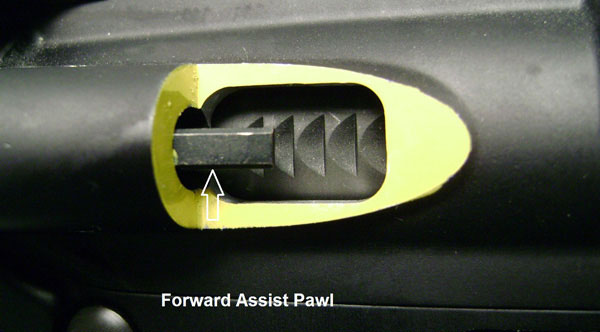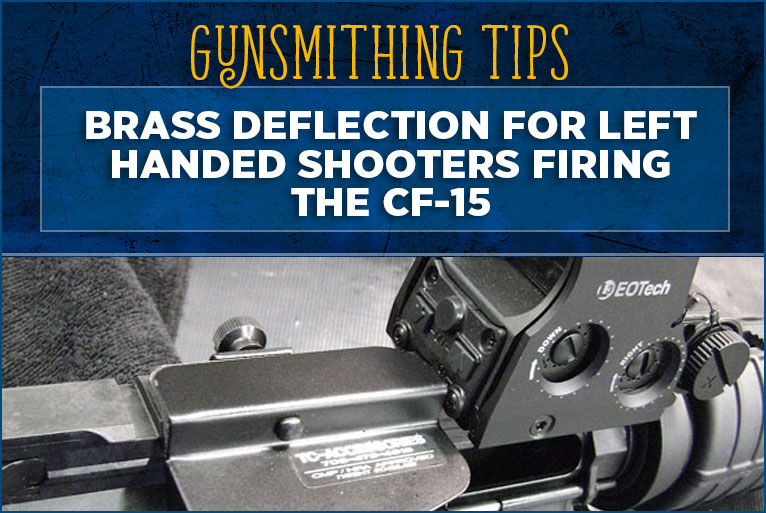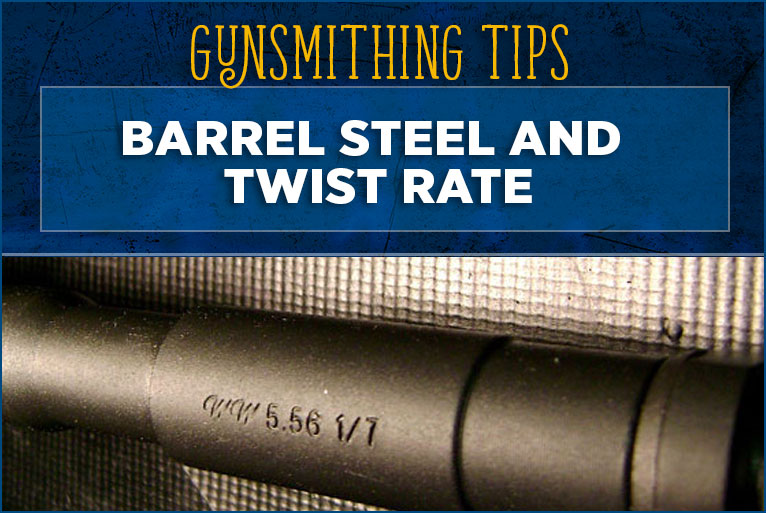The vast majority of AR15 shooters have a good idea about how the weapons work, but for those of you that might like a clearer view, here’s a look inside with some explanations of what goes on.
First here is the gas port coming out of the barrel and into the gas block. When a round is fired and the bullet passes the port, the hot gasses enter the port and then into the gas tube.
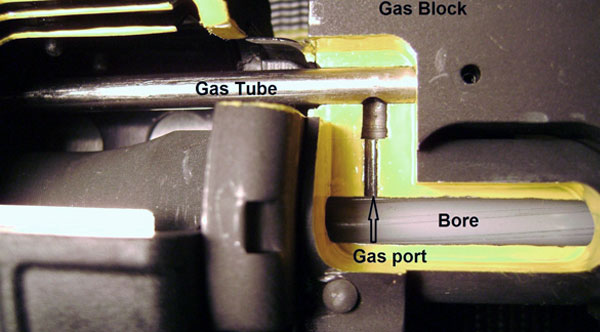
The hot gasses travel down the gas tube entering the gas key on top of the bolt carrier. Through a port in the carrier, the gasses blow into the area at the back of the bolt itself. This forces the carrier backwards away from the bolt. As the carrier moves backwards the cam pin that goes into the bolt through it, slides in a notch that forces the bolt to rotate. This rotates and unlocks the bolt after the pressure of the fired round has dropped with the bullet exiting the bore. This allows the carrier to continue its backward motion to the rear stopping when it goes as far back as it can against the buffer and spring. The empty case is simultaneously extracted and ejected from the gun and the carrier moves back forward under tension of the buffer spring, stripping a fresh round from the magazine and chambering it into battery.
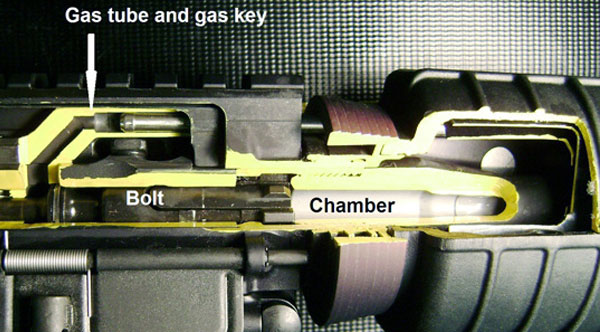
This photo shows the carrier compressing the buffer and spring all the way to the rear.
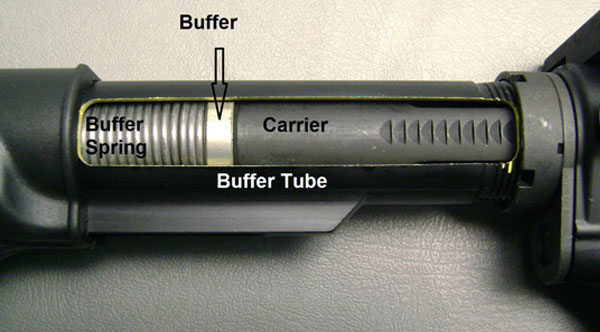
Inside the receiver, this photo shows what the hammer and trigger positions look like when the bolt is locked to the rear. When the gun is fired and the hammer comes back, the disconnector engages the hook on the back of the hammer holding it back. When the trigger is released it drops off of the disconnector and stops on the sear which is on the trigger at the sear notch in the hammer. This makes it so the gun can only be fired one shot at a time or in “semi-auto” only.
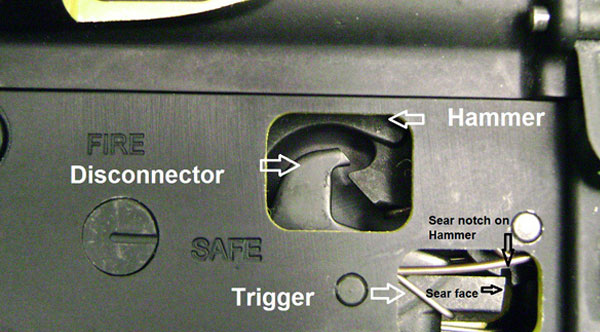
And this is where the forward assist pawl engages the notches in the bolt carrier assembly. If the weapon does not go fully into battery when chambering a round, pushing the forward assist helps the carrier forward to send the bolt all the way into battery.
